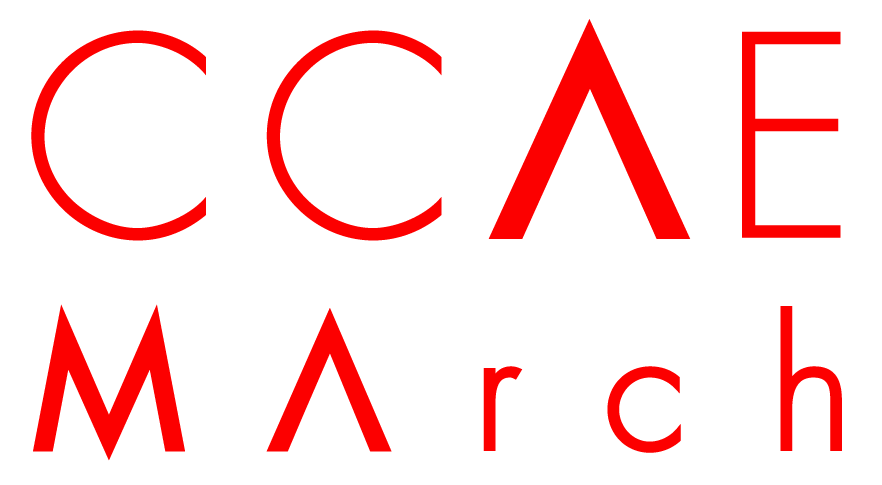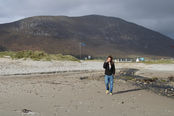03
Fieldwork.


Thinking about our objective this year – which was about articulating distinct architectural positions and developing a radically poetic type of architecture, we initially visited a number of Island sites - or different ‘insular’ spatio-temporal fields. To locate us in this creative and critical space, the students were encouraged to develop a type of critical ‘archipelagic thinking’ – initially by adopting two works (one literary/one artistic or architectural) that contextualised and informed their own studies – allowing for the new creative and critical methodologies and the the emergence of a new architectural Island-fiction.
Students were then encouraged to critically develop new architectural proposals by understandings the tension between the experience of space (the real) and the conception of space (the ideal) and between the fictional and the logical - and we used this ideas of islands to develop new types of islands/spaces that similarly hold experimental new types of spatio-psychic, socio-ecological, biogeographical, and cultural paradigms. Promoting different research methods for developing very specific readings of these places – their fragile ecosystems, we encouraged a familiarity with various Island literature and [speculative and bizarre] and radical Island experiments as a starting-point.
(p.s) Remember, as Ben Myers warns us:
“it is not until Robinson Crusoe climbs the mountain and realises that he is entirely surrounded by water that the true horror of his situation becomes apparent and his endurance test truly begins… it is not the physical hardships that are the greatest threat, but the psychological trauma inflicted by his isolation. And the smaller the island, of course, the greater that sense of entrapment."
Ben Myers, Why writers treasure Islands. https://www.theguardian.com/books/booksblog/2011/may/31/writers-islands-fiction)
Island Reflections.
"I had a formula to guide me and whip me on through the thickets of difficulties I encountered: while walking the land, I am the pen on the paper; while drawing this map, my pen is myself walking the land."
Tim Robinson
Islands are “the loci of imagination, desire, hopes and fears, the goal of dreamers and mystics and misfits, multiplying moulds into which cosmographers and cartographers could pour both art and science, material spaces which the merchant venturer, pirate, colonist and governor could penetrate and exploit.”
Denis Cosgrove
ISLAND OBSERVATIONS
Our experiences both on Inis Mór and during the Coronavirus lockdowns acted as the genesis for many of the themes which became the focus of our study. While working at home, we began to experience the strange timelessness that is brought about by both the endless repetition of a ceaselessly unchanging schedule, as well as the unnerving feeling of absurdity that one experiences from over exposure to objects which they previously have taken for granted.
Taking this as a starting point, we began recording and investigating these phenomena through the use of photographic and graphic media. Such feelings were also encountered when we began site investigations on the Aran Islands. This may have been in part due to the timing of our visits. We had the rare opportunity to experience the normally busy islands devoid of tourists, which allowed us to absorb and experience the landscape in a unique way. During our time on the island we became fascinated by the clear geographical divide between the North and South ends of Inis Mór. The north side of the island consists of lush green fields and rolling hills.
The south side of the island is made up of a barren limestone landscape, culminating in massive sea-cliffs stretching into the Atlantic Ocean. We became particularly taken with the southern half of the island, finding ourselves in a bizarre stone dessert, unlike anywhere we had been before. The landscape of Aran in no way conformed to our pre-figured notions of the Irish-countryside. Such an encounter with phenomena that wrestled with our preconceived notions of how landscape should be, creating the feeling of an alien landscape that generated a sense of detachment, of otherworldliness. These feelings were also evident in our encounters with the dry-stone walls which permeate the landscape of the island. The walls are manifested symbols that weave the cultural narrative of Aran into being. They are “both an artefact based on foundations of geology and climate, and a narrative, layer upon layer of our history and nature’s history intertwined’. Yet in this symbolism they are also manifestors of contradictions. While they appear to support a landscape that seems almost entirely natural and organic, it is a landscape of fabrications. Inis Mór is “a humanised landscape that has almost an urban intensity; unlike those significant cultural landscapes which are replete with intangible significance but untouched by the imprint of human beings, the surface of Aran is almost entirely built or made by man; it is virtually a handmade landscape.”
Reflecting on these experiences, we felt a resonance with some of the absurdist works of the playwright Samuel Beckett. In his plays he portrays a feeling of alienation brought on by encounters with the world around you. This mirrored our feelings of existential dread and alienation that we experienced both at home and in the island territory.
Neil O’Brien and Fergal O’Connor
Our personal experience of the islands certainly reorientated our previous misconceptions, allowing us to contemplate upon these views. The islands became landscapes of truth, where we could bear witness to the unification of nature and culture. We started to examine the symbiotic relationships that exist between us and the world around us. This harmonious way of living is best described as “sympoiesis”, a term coined by the philosopher Donna Haraway which means ‘making with’ and one that supports the idea that “nothing makes itself and nothing is really autopoetic or entirely self-organizing.… Sympoiesis is a word proper to complex, dynamic, responsive, situated, historical systems’’
Katie Hamilton and Keeva O’Sullivan
As Stephen Barber extracts from a letter that Artaud wrote to his biographer Paule Thévenin, Artaud “had been deeply struck by Robert Flaherty’s 1934 film Man of Aran.” Criticised for its depiction of a sensationalised reality of embellished hardship by forcing the actors to carry out tasks in detrimental conditions for theatrical effect, the film illustrates a primitive culture clutching for survival (often literally in some scenes) on the edge of the western world. With “Inis Mór’s filmic human figures desperately attempting to survive on a desolate, sloping terrain seascapes of roaring waves, and with its outbursts of spectacular prehistoric drumshaped clifftop hill-forts . . . the island as depicted in Man of Aran must have appeared an ideal location on which to envision and witness signs of his imminent Apocalypse.” Teetering the physical and mental edge, Artaud’s ‘apocalypse’ is formulated as death/ rebirth, an existential moment that considered the limits of humanity and the limits of the human psyche brought together in the same temporal space.
Brian Hand







Postscript.


The studio has undoubtedly benefitted from the considerable support of friends, colleagues, and a range of contributors. We were supported in different ways throughout the year, and with the propulsion of the studio into a hybrid state due to various outbreaks and lockdowns due to Covid-19, this support was vital in both sustaining and guiding the works throughout the year. We had enormous support from CCAE Director Professor Kevin McCartney, Associate Director Katherine Keane, and Senior Administrator Gerry McCarthy during this time – who ensured resources were increased to counter the worst effects of national restrictions. With this, the importance of having thoughtful consideration of the projects was heightened and we are thankful that we could rely on the generosity of external reviewers that included: Professor Mark Dorrian, Professor Hugh Campbell, Denis Linehan, Tiago Torres Campos, Una Daly, Dr Chris French, Paddi Alice Benson, James Craig, Maroun Tabbal.
With the strong support from our External Examiners Marcos Cruz, Lorraine Farrelly, and Alastair Hall, the students capably pivoted to the experimental and innovative uses of digital skills and techniques - in order to heighten the resolution of their projects. This is, of course, what we often expect of our graduates – but in this case, it is displayed with such creativity and ambition that these qualities seem to gain heightened purpose in these times. For these reasons, it is only right to celebrate their achievements – hoping that others find the work stimulating and a worthwhile contribution to an ongoing project that considers the possibilities in architecture in new ways.


MArch Programme Director
Dr. Jason O’Shaughnessy
Design Studio Team
Lorenzo Cammoranesi, Kieran Cremin, Jason O’Shaughnessy
Cultures & Context Lecturer(s)
Kate Buckley
Technology Transformations Lecturer(s)
Professor Kevin McCartney, Maroun Tabbal
Design Studio Multimedia Tutor
Viktor Gekker
Creative Digital Maker
Aoife Browne
External Examiners 2020-2021
Professor Marcos Cruz, Professor Lorraine Farrelly, Mr John Parker, Mr Alastair Hall












